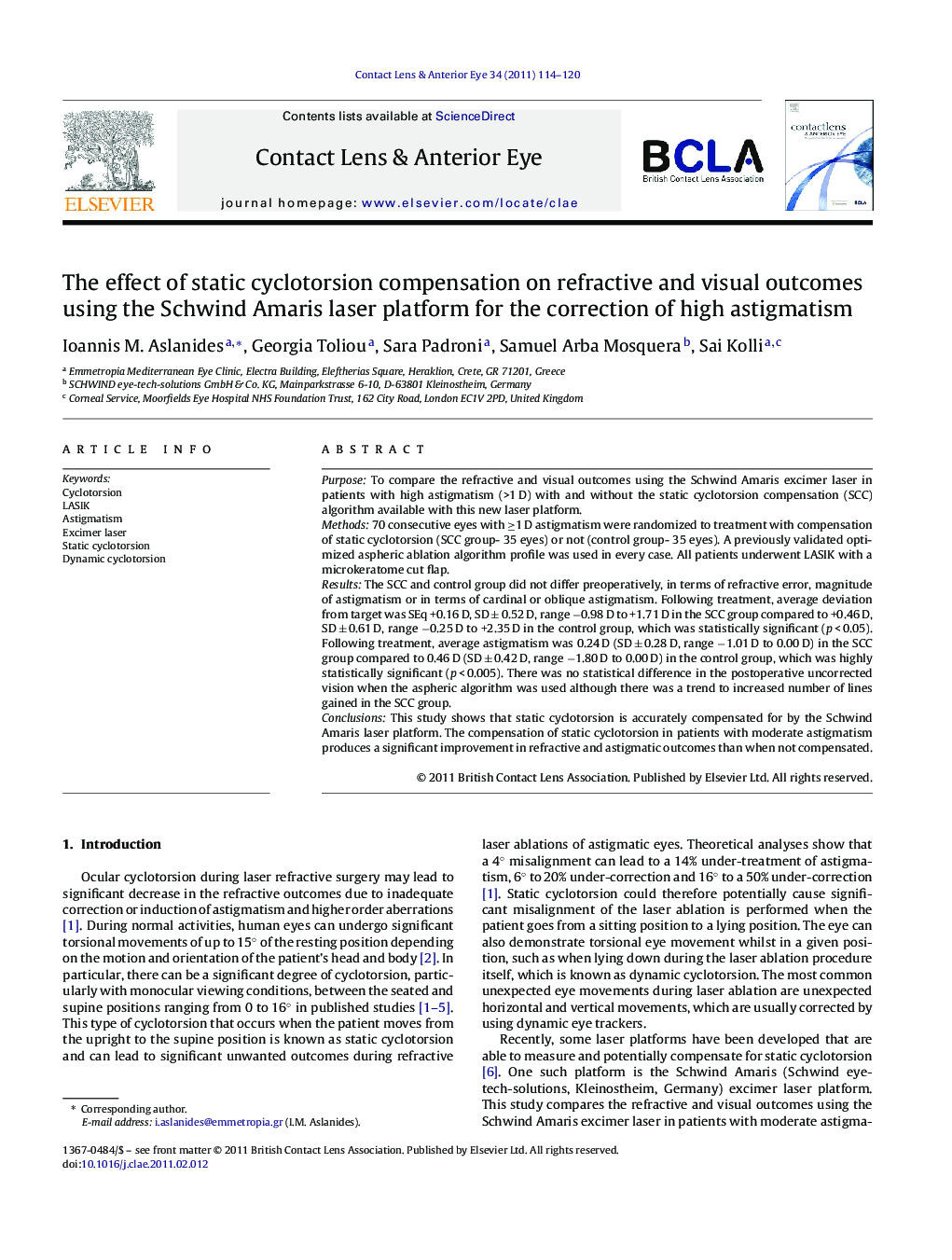| Article ID | Journal | Published Year | Pages | File Type |
|---|---|---|---|---|
| 2693788 | Contact Lens and Anterior Eye | 2011 | 7 Pages |
PurposeTo compare the refractive and visual outcomes using the Schwind Amaris excimer laser in patients with high astigmatism (>1 D) with and without the static cyclotorsion compensation (SCC) algorithm available with this new laser platform.Methods70 consecutive eyes with ≥1 D astigmatism were randomized to treatment with compensation of static cyclotorsion (SCC group- 35 eyes) or not (control group- 35 eyes). A previously validated optimized aspheric ablation algorithm profile was used in every case. All patients underwent LASIK with a microkeratome cut flap.ResultsThe SCC and control group did not differ preoperatively, in terms of refractive error, magnitude of astigmatism or in terms of cardinal or oblique astigmatism. Following treatment, average deviation from target was SEq +0.16 D, SD ± 0.52 D, range −0.98 D to +1.71 D in the SCC group compared to +0.46 D, SD ± 0.61 D, range −0.25 D to +2.35 D in the control group, which was statistically significant (p < 0.05). Following treatment, average astigmatism was 0.24 D (SD ± 0.28 D, range −1.01 D to 0.00 D) in the SCC group compared to 0.46 D (SD ± 0.42 D, range −1.80 D to 0.00 D) in the control group, which was highly statistically significant (p < 0.005). There was no statistical difference in the postoperative uncorrected vision when the aspheric algorithm was used although there was a trend to increased number of lines gained in the SCC group.ConclusionsThis study shows that static cyclotorsion is accurately compensated for by the Schwind Amaris laser platform. The compensation of static cyclotorsion in patients with moderate astigmatism produces a significant improvement in refractive and astigmatic outcomes than when not compensated.
